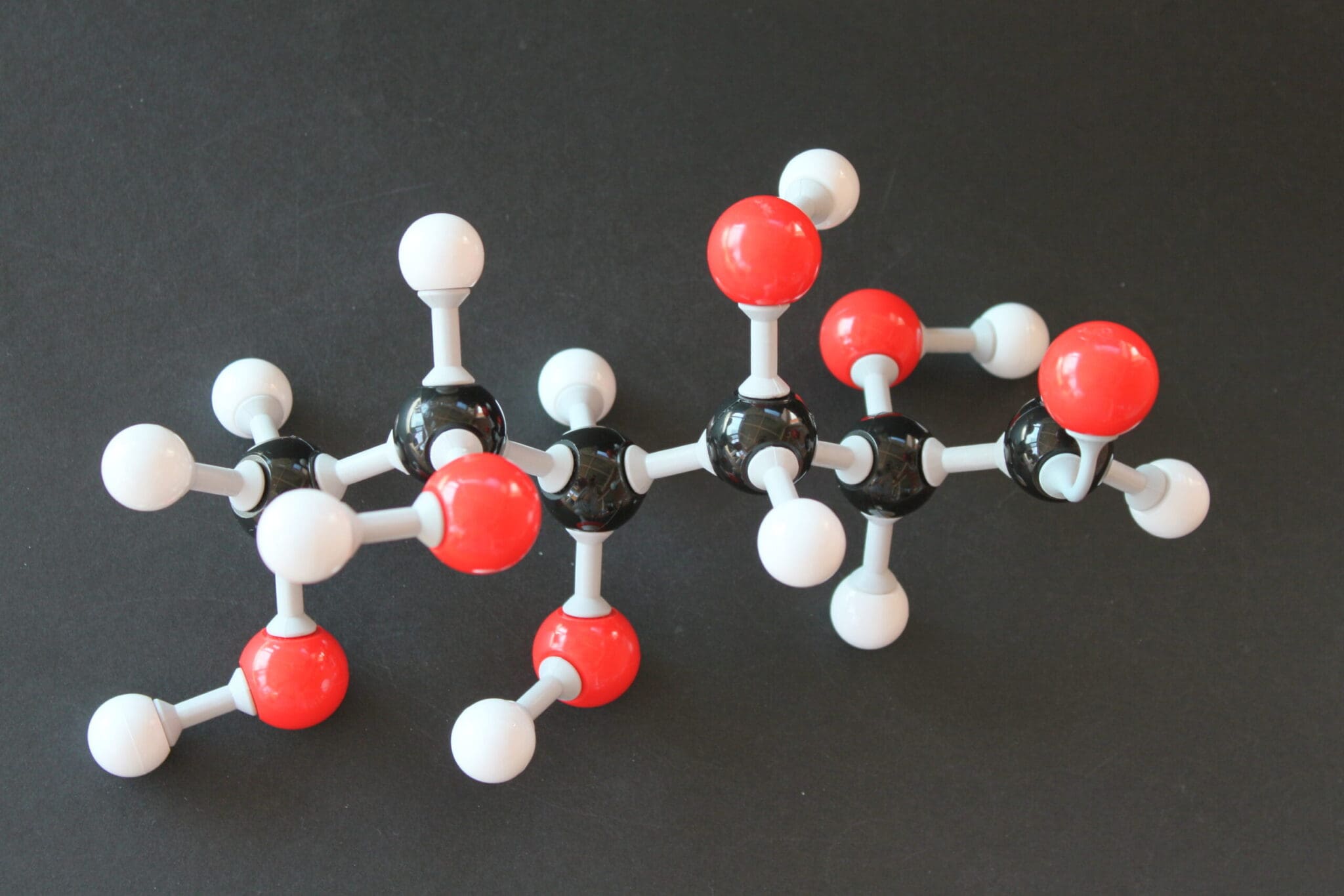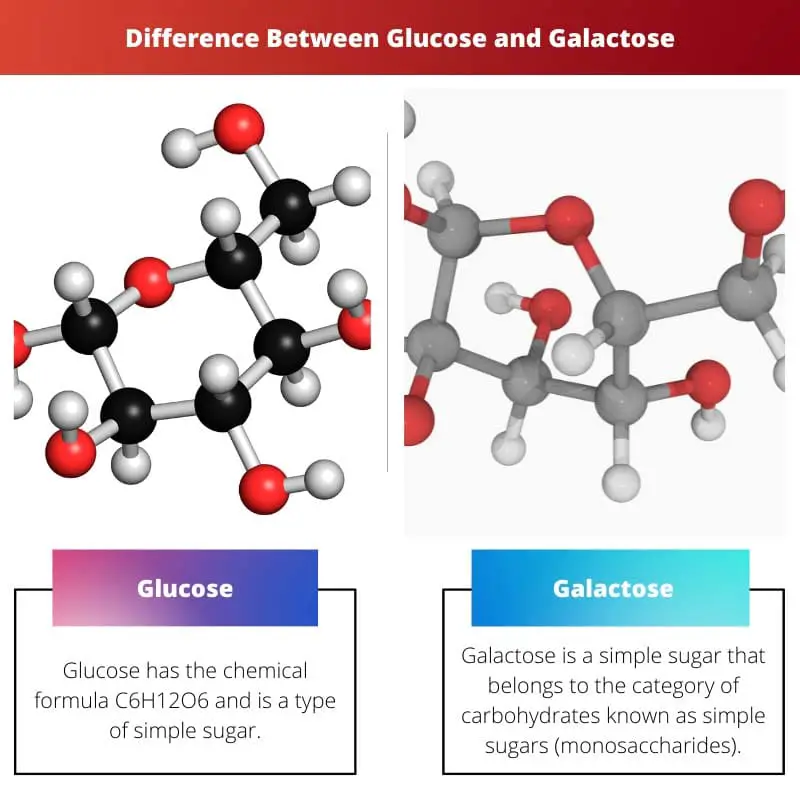Carbohydrates consist of glucose and galactose. Carbohydrates are the most common organic molecules on the planet. Living creatures get their chemical energy from them.
Not only that, but they are crucial tissue constituents. Monosaccharides, disaccharides, and polysaccharides are the three types of carbohydrates.
Monosaccharides are the most basic form of carbohydrate. Monosaccharides are glucose and galactose.
Key Takeaways
- Glucose is a simple sugar that is the primary energy source for the body, while galactose is a component of lactose, a sugar found in milk and dairy products.
- Glucose is found in various foods and is readily available for use by the body, while galactose needs to be converted to glucose in the liver before it can be used.
- Glucose is more commonly known and used in the body than galactose.
Glucose vs Galactose
Glucose is a sugar that is used by many organisms as an energy source. It is found in fruits, vegetables, and honey, and is also produced by the human body when carbohydrates are broken down. Galactose is found in milk and dairy products, and is produced when lactose is broken down.

Glucose has the chemical formula C6H12O6 and is a type of simple sugar. Glucose is a monosaccharide that is converted into disaccharides and polysaccharides.
Glucose has a molar mass of 180 g/mol and appears as a white powder. Depending on the chemical structure of the molecule, the melting point of glucose varies between 140°C and 150°C.
Galactose is a simple sugar that belongs to the category of carbohydrates known as simple sugars (monosaccharides).
It is frequently found in nature in combination with other sugars, like in lactose, for example (milk sugar).
Galactose can also be present in complex carbohydrates (see polysaccharides) and carbohydrate-containing lipids known as glycolipids, which are found in most animals’ brains and nervous tissues.
Comparison Table
| Parameters of Comparison | Glucose | Galactose |
|---|---|---|
| Stability | More stable | Less stable |
| Taste | Sweet | Less sweet |
| Sources | Juices, sugars, fruits, etc. | Dairy products, gums, sugar beets, etc. |
| Melting Point | Lower | Higher |
| Solubility in Water | More soluble | Less soluble |
What is Glucose?
The simplest compound in the list of carbohydrates is glucose, which is a monosaccharide with only one sugar. It’s the essential component that keeps the body’s mechanisms running smoothly.
When the body’s glucose level is regular, it goes unnoticed, but when it varies, it can cause health problems that go unrecognized and leave you with persistent and serious health difficulties.
It’s also one of the most favored sources of fuel for a body’s proper operation. Glucose can be obtained from a variety of foods, including bread, vegetables, fruits, and dairy products.
Our bodies begin to metabolize glucose once we eat something, and this process continues numerous times throughout the day.
When food enters our system, the pancreas receives a signal to release insulin, which helps to keep blood sugar levels stable.
A person with diabetes is needed to test their glucose levels as part of their regular check-up. Glucose testing is simple and can be done at home by simply pricking a finger with a little needle known as a Lancet.
Our bodies’ systems require monosaccharide glucose for proper functioning and upkeep. This sugar provides energy to our bodies.
Carbohydrates, including bread, fruits, dairy products, and other carbs, provide glucose. They provide us with the energy we need to move around. If we eat enough, we can speed up our metabolism and feel healthier.
Glucose is the most frequent type of sugar found in the bloodstream and the body’s principal source of energy. Glucose can be obtained from the foods we eat or produced by the body from other substances.
Glucose is transported to the tissues via the circulatory system. Blood glucose levels are controlled by several hormones, mainly insulin.
Glucose is necessary for keeping the body’s systems in excellent working order. It’s typical to let our blood sugars go unchecked when they’re at their best.
You’ll notice a negative influence on regular performance when they vary from the permissible limitations. Because it is the simplest of sugars, it is called a monosaccharide.
This denotes that it only contains a single sugar.
Glucose concentrations that are abnormal or out of control can have long-term and hazardous repercussions. When we consume glucose, our bodies immediately begin to digest it.
With the help of the pancreas, enzymes begin the decomposition process. Our body’s ability to deal with glucose is dependent on the pancreas, which produces substances like insulin.

What is Galactose?
Galactose is a monosaccharide and simple sugar. Galactose has the same chemical formula as glucose: C6H12O6.
It has four –OH groups and a –CH2OH group in its chemical structure. Galactose, like glucose, is an aldohexose because it has six carbon atoms and a terminal aldehyde group.
Galactose can be found in two forms: open-chain and cyclic. Some disaccharides, such as Lactose (Glucose + Galactose) and Galactan, are made up of galactose. Galactose has a melting point of around 1670°C.
Hexose monosaccharide galactose is a hexose monosaccharide. Like glucose, it possesses an aldehyde group at the end of the molecule. Because of the position of the –OH in the fourth carbon, it varies from glucose.
Galactose comes in two forms: open-chain and cyclic. Galactose can be found in dairy products and sugar beets. Galactose is also produced by our bodies.
Compared to glucose, galactose is a less sweet monosaccharide sugar. It’s a glucose C-4 epimer. Galactose is commonly found in the body as a result of the polymer galactin being hydrolyzed into galactose.
It is a hexose monosaccharide with four isomers. Because of the position of the –OH in the fourth carbon, it varies from glucose.
Galactose, like glucose, is a monosaccharide with the molecular formula C6H12O6. It has a structure that is very similar to glucose, except for the position of one hydroxyl group.
Galactose, on the other hand, has chemical and metabolic features that are distinct from glucose.

Main Differences Between Glucose and Galactose
- Glucose is more stable in comparison to galactose.
- Glucose tastes sweeter than galactose.
- Sources of glucose can be juices, fruits, etc. And the sources of galactose can be sugar beets, dairy products, etc.
- The melting point of glucose is lower than galactose.
- The –OH group is towards the right side in glucose and towards the left in galactose.
- Glucose is more soluble in water, whereas galactose is less soluble.

References
- https://journals.asm.org/doi/abs/10.1128/jb.96.2.472-478.1968
- https://journals.physiology.org/doi/abs/10.1152/ajpgi.1998.275.5.G879
